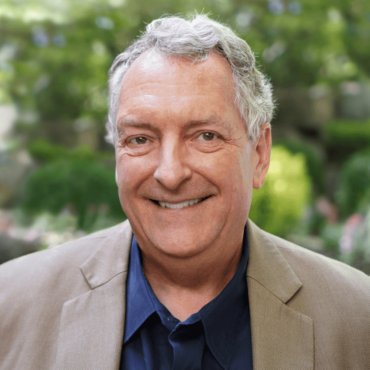

Gary Flood, Journalist, The HR Congress
WHY SHOULD YOU CARE?
HR needs to think about itself in a much more dynamic, adaptive, but also scientific and evidence-based version of themselves
At one of Europe’s most important CHRO and Future of Work events,the HORIZON SUMMIT, a number of major HR industry commentators shared their perspectives.
Let’s dip into what a few of them had to say—being aware that this is only a taster of their rich talks, and we recommend studying the whole video.
If you are serious about reinventing, reimagining and then transforming HR, then maybe look first to a key business role from another industry, technology: product managers.
The advice came from a key first plenary at our September ‘TechFest’ from Perry Timms, Founder and ‘Chief Energy Officer’ at a B Corp called People & Transformational HR.
His talk was advertised as telling how HR leaders can create value and impact strategy in our current uncertain and volatile times.
Given that he was recently ranked Number 1 Most Influential HR Thinker by the HR Magazine, delegate expectation was high for this one—expectations his extremely thought-provoking presentation more than delivered on.
To make his point, Timms traced the evolution of HR from its 19th century worker welfare origins to the arrival of Personnel in the 1980s and then ‘HR’ in the 1990s, and now today’s emphasis on ‘people and culture.’
Accompanying that evolution has been change in the conceptual map of the discipline–culminating for many practitioners the work of Dave Ulrich in 1997.
That’s a model, he reminded us, on the three pillars of Shared Services (centralised, tech-enabled HR service delivery excellence, sometimes outsourced), and Centers of Excellence (HR experts with specialist knowledge who deliver leading edge strategy and solutions working with Business Partners (HR professionals working closely with business outcomes through human capital solutions).
“That model is still accepted, and lots of people could probably point to their HR structure and say it had the same structure,” he said.
From ‘pillars’ to ‘zones’
Timms himself tried to update the Ulrich model in 2017 and has again just recently tried to adapt it even more for today’s world.
“What HR is being asked to do is map a route to the future to help organizations get ready for new technology,” he said. “But that requires a different business model designed for different client, customer and service demands.”
His main learning from that research is the first of two useful pop culture metaphors: ’42 At Work’ (a call-back to the famous ‘answer to everything’ joke in Hitchhiker’s Guide).
42 centers on HR at last acknowledging the personal and human side of the employee. “We talk about what value an organization needs to create, but that has connected to the individual’s sense of what they value in life.
“Sadly, when I talk to a lot of organizations, we’ve kind of lost that and forgotten it: we’ve diluted it, it’s not as important as it should be–so I think there’s something about respecting purpose and respecting that and aligning across the value chain.” “We kind of need to do some alignment things before we even get going on what work needs to be done.”
In his latest refresh of the Ulrich model, then, Timms recommends moving from pillars to zones, which he defines as:
- HR People Strategy & partnerships
- HR People & organizational transformation
- HR People & Support Program Support
- HR People Performance & Development.
In this model, HR would be driven by systems designers who can interoperate with performance analysts and other new specialists to help us create a much more responsive, adaptable, and sustainable mode for our organisations into the future.
‘We need to think about ourselves in a much more dynamic, adaptive, but also scientific and evidence-based version of ourselves’
And to make this work, the new HR function of the product manager comes in. “Product managers are people who will build the things that people use to access benefits, to access development, to understand how they can create a career path, to understand what happens when there’s a maternity situation–whatever it might be. They can build the things that people need with an acute sense of consumerism, like how staff access everyday things like being able to book and buy online into a work-related proposition.
“HR needs products and the people to build things that other people can use.”
“And they in turn need to be supported by an operations team who own the end-to-end employee lifecycle, recruitment, can think about onboarding, development programmes, apprenticeship schemes, and so on.”
Summing up, for Timms, “We need to think about ourselves in a much more dynamic, adaptive, but also scientific and evidence-based version of ourselves.”
Which brought him to his second pop culture reference: The Mandalorian’s constant mantra of duty and obligation–‘This Is The Way.’
Though he did accept that this level of change won’t be an overnight job so is probably more of a 2030 vision, this HR veteran and thinker is convinced that ‘This Is The Only Way’ to strengthen the proposition and reinforce the value that people feel HR creates.
See the full version of this keynote recorded at The HR Congress TechFest virtual summit earlier:
Written by: Katalin Toth
HR Innovation HR Strategy HR Transformation Leadership
Previous post

- 5053
- 1
labelVideos today2022.12.05.
Dave Ulrich: Get Results from Your HR Transformation
Dave Ulrich, Partner RBL, Rensis Likert Professor of Business, Ross School of Business, University of Michigan Recorded on 30th NovemberThe HR Congress World Summit 2022 Get Results from Your HR [...]
Similar posts

labelArticles today2024.07.24.
AI-Powered HR: Strategic Benefits and Practical Applications

labelArticles today2024.06.24.









Post comments (0)